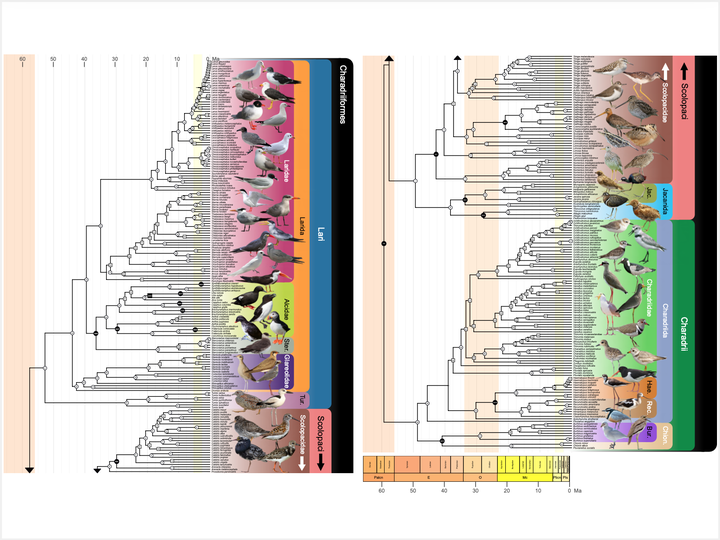Vetted calibrations and comprehensive taxon sampling clarify the timescale of shorebird evolution

Abstract
Shorebirds (Aves: Charadriiformes) represent one of the most species-rich orders of non-passerine birds, and their ecomorphological disparity has inspired a number of comparative studies. However, the lack of a reliably time-calibrated and taxonomically comprehensive phylogeny for the clade as a whole has impeded efforts to extend such studies to the ordinal level. Previous estimates of the age of the charadriiform crown group have ranged from the Early Cretaceous to the late Eocene, in both cases contradicting the known fossil record. Here, we present a total-evidence charadriiform phylogeny containing 336 species (~89% of the extant diversity) based on a 24-locus supermatrix and 69 morphological characters. We estimated divergence times on the fixed total-evidence topology using MCMCTree, a subset of 8 clock-like loci, and 16 extensively vetted fossil calibrations. The autocorrelated and uncorrelated relaxed clock models both place the origin of the charadriiform crown group in the Paleocene (95% HPD: 55.0–63.0 and 59.3–64.8 Ma, respectively), consistent with the known fossil record, but differ with regard to the timing of the seagull radiation (Larinae). This difference propagates into downstream analyses of diversification rates, causing BAMM to infer a speciation rate shift on the uncorrelated-rates tree but not the autocorrelated-rates tree favored by Bayes factor comparisons. Contrary to some previous findings, our results suggest that investigating the sensitivity of macroevolutionary rate estimates to the modeling assumptions made in time tree inference is essential for establishing the tempo and mode of clade evolution.